🕓 2024/2/11
#観光地
.png?width=819&height=415&name=AdobeStock_399380582%20(1).png)
Table of Contents
- A Vast Land Where Nature Thrives | Shiretoko Peninsula, a UNESCO World Heritage Site
- A Canal Town Illuminated by Gas Lamps | Otaru
- History engraved in a star-shaped fortress | Goryokaku
Top 3 Must-Visit Travel Destinations in Hokkaido
ー What is Hokkaido? ー
Hokkaido is the northernmost region of Japan, covering a vast area of approximately 83,423 square kilometers, which accounts for about 20% of Japan’s total landmass. This expansive land is home to untouched natural landscapes that showcase breathtaking scenery throughout the four seasons, captivating visitors from around the world.
Beyond its stunning natural beauty, Hokkaido is also renowned as a gourmet paradise, offering an abundance of fresh seafood and agricultural products. The region is dotted with numerous hot spring resorts, each boasting unique mineral compositions, providing visitors with a relaxing and rejuvenating experience.
Moreover, Hokkaido's charm varies with each season. In spring, cherry blossoms bloom across the island, while summer transforms the land into a vibrant spectacle of lavender fields. The autumn foliage paints the mountains in shades of red and gold, and winter blankets the land in pristine snow, creating magical landscapes. Every visit to Hokkaido offers a new and unforgettable experience, making it a destination worth exploring throughout the year.
1. A Land Where Grand Nature Thrives | Shiretoko Peninsula, a UNESCO World Heritage Site
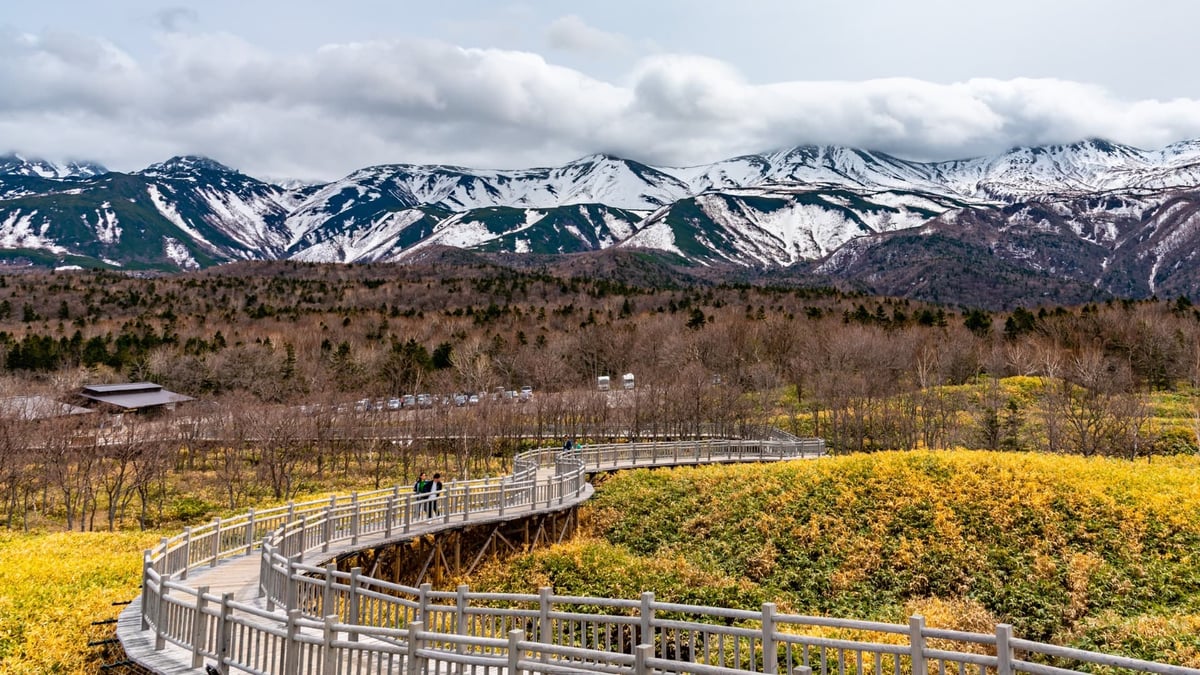
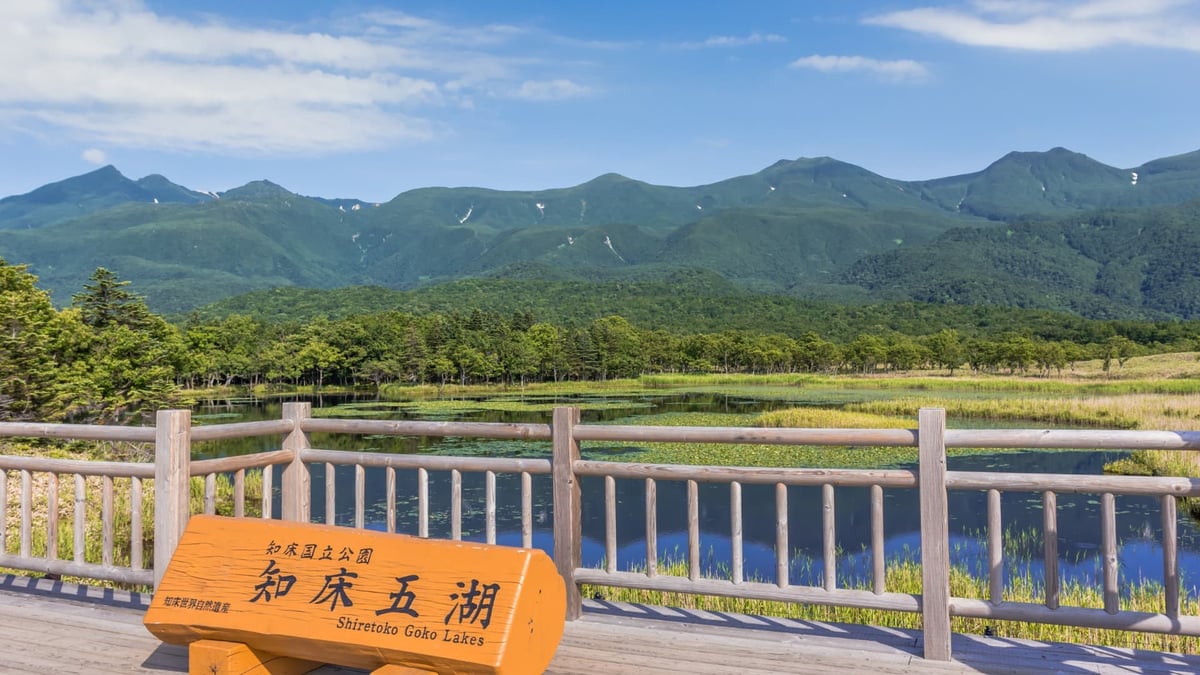





● The Wonders of Shiretoko Peninsula
Shiretoko Peninsula is a narrow landmass extending from the northeasternmost part of Hokkaido, measuring approximately 70 km in length and 25 km at its widest point. In July 2005, it was designated as a UNESCO World Natural Heritage Site, recognized for its untouched wilderness and rich ecosystem. The Shiretoko Mountain Range, with peaks such as Mount Rausu (1,661m), forms the central backbone of the peninsula, creating a breathtaking natural landscape.
Shiretoko is one of the lowest-latitude regions in the world where seawater freezes. During winter, the sea is covered in drifting ice, bringing nutrient-rich waters that support plankton growth, forming the foundation of a diverse and thriving food chain. As a result, the region is home to a variety of wildlife, including brown bears, Ezo deer, Steller’s sea eagles, and seals.
The peninsula also features mystical natural landscapes, such as the Shiretoko Five Lakes and Kamuiwakka Hot Falls, providing visitors with stunning scenery throughout the seasons. Shiretoko Peninsula truly embodies the essence of a grand, untouched natural paradise.
● History of Shiretoko Peninsula

The history of Shiretoko Peninsula dates back thousands of years to prehistoric times. By the 10th century, the region came under the influence of the Okhotsk culture, and later, the Ainu people settled in Shiretoko, developing their unique culture in harmony with nature.
However, due to its harsh climate and rugged terrain, agricultural development in Shiretoko was extremely challenging. Over time, the importance of conserving the natural environment became more widely recognized. In 1964, Shiretoko was designated as a national park, and in 1977, the “Shiretoko 100 Square Meter Movement” was launched to protect the area from unregulated development.
As a result of these conservation efforts, in 2005, Shiretoko was officially registered as a UNESCO World Natural Heritage Site. It was recognized for its unique coexistence of pristine forests and an ocean ecosystem sustained by drifting ice, as well as for being a habitat for rare wildlife species.
● Access to Shiretoko Peninsula
- Address: 〒099-4356 Hokkaido, Shari District, Shari Town, Onnebetsu Village
- Google Maps: https://maps.app.goo.gl/QtmzZxAbggchT1aw6
- Public Transportation:From Kushiro Airport, take the JR Senmō Main Line to Shiretoko-Shari Station, then transfer to a bus heading toward the Shiretoko area.
Seasonal buses operate during winter specifically for drift ice sightseeing tours.
While public transportation and rental cars are commonly used, transportation schedules may change depending on the season and weather conditions, so it is recommended to check in advance.
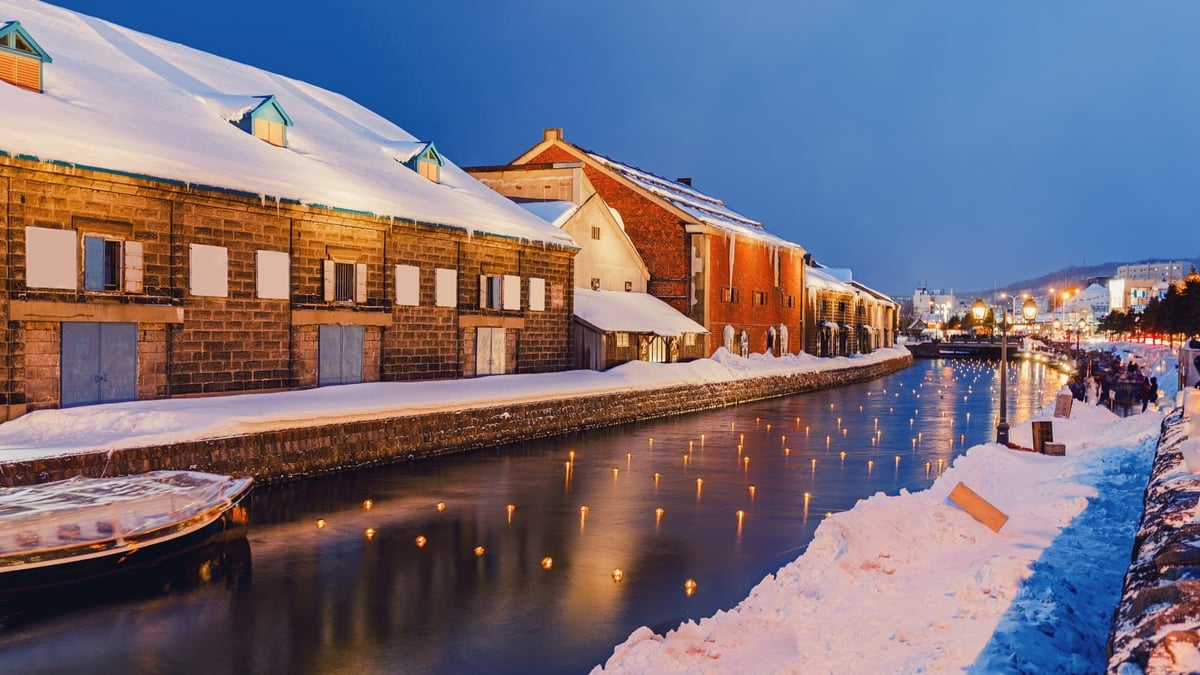
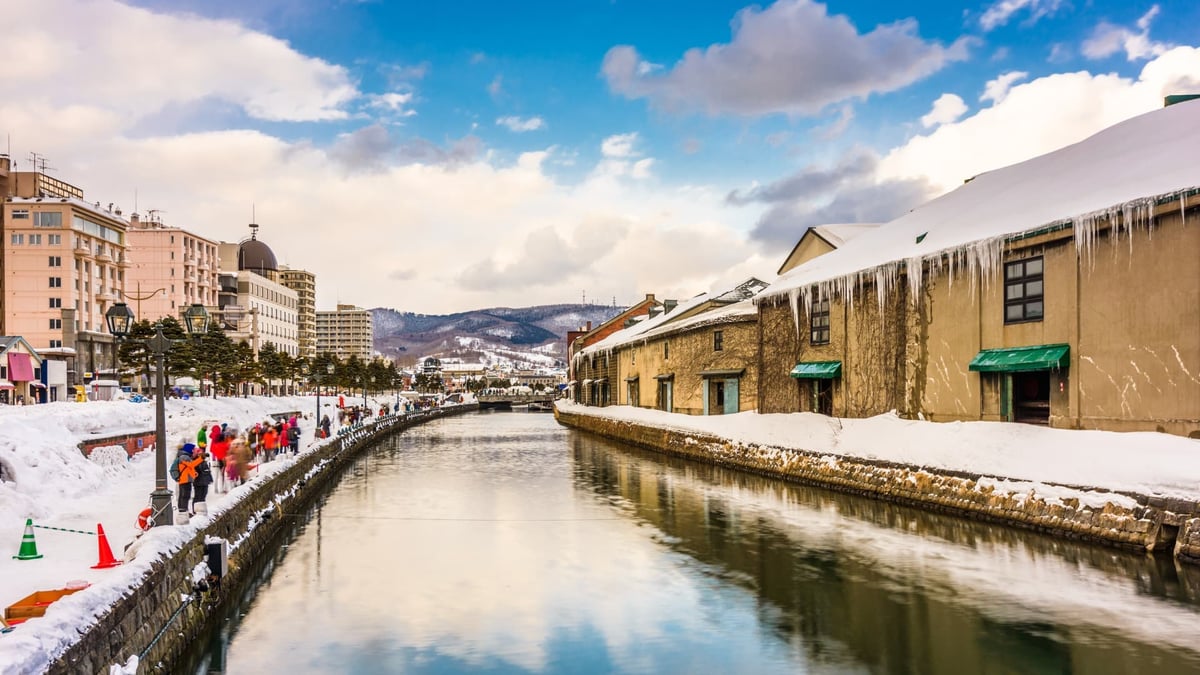




● The Charm of Otaru
Otaru Canal is one of the most iconic sightseeing spots in Otaru, Hokkaido, captivating visitors with its historic scenery and romantic atmosphere. The 1,140-meter-long canal is lined with old stone warehouses, which have now been beautifully renovated into cafés, restaurants, and shops, offering a variety of experiences for visitors.
Particularly at dusk and into the evening, the 63 gas lamps along the canal walkway illuminate the surroundings, casting a nostalgic glow over the stone warehouses. This picturesque nightscape has been recognized as part of Japan’s Night View Heritage and is beloved by many visitors.
Another popular activity is the Otaru Canal Cruise, which lasts about 40 minutes. The day cruise provides guided commentary on Otaru’s history and notable landmarks, while the night cruise allows visitors to enjoy the romantic scenery of the gas-lit canal from the water. During winter, the sight of the snow-covered canal and glowing gas lamps creates an almost painting-like beauty, enchanting visitors with its magical ambiance.
● The History of Otaru

Otaru’s history dates back to when the Ainu people, the indigenous inhabitants of Hokkaido, engaged in trade in this region. The name "Otaru" originates from the Ainu language term "Ota Oru Nai", which means "river flowing through the sandy beach."
From the 1850s, the booming herring fishing industry led to the rapid development of Otaru as a commercial hub, earning it the nickname "Herring Gold Rush" due to the economic prosperity it brought.
In the Meiji era (1868-1912), modernization efforts saw the construction of Hokkaido’s first railway, the government-run Horonai Railway, in 1880, connecting Temiya (Otaru) and Sapporo. This development cemented Otaru’s status as a logistics center. Additionally, the expansion of Otaru Port made it a key coal export hub, further strengthening its role in Hokkaido’s economy.
Thanks to this economic prosperity, financial institutions and trading companies flourished in Otaru, leading to its reputation as “The Wall Street of the North.” However, from the early Showa period (1926-1989) onwards, the decline of herring fishing and the economic shift towards Sapporo gradually led to the stagnation of Otaru’s economy.
● Access to Otaru
- Location: Otaru, Hokkaido
- Google Maps:https://maps.app.goo.gl/N5ZWVnjb7Sq53Xnm7
- By Train: From Sapporo, you can take the JR Hakodate Main Line via the "Rapid Airport" service or a regular train to Otaru Station.
3. A Fortress Engraved with History | Goryokaku
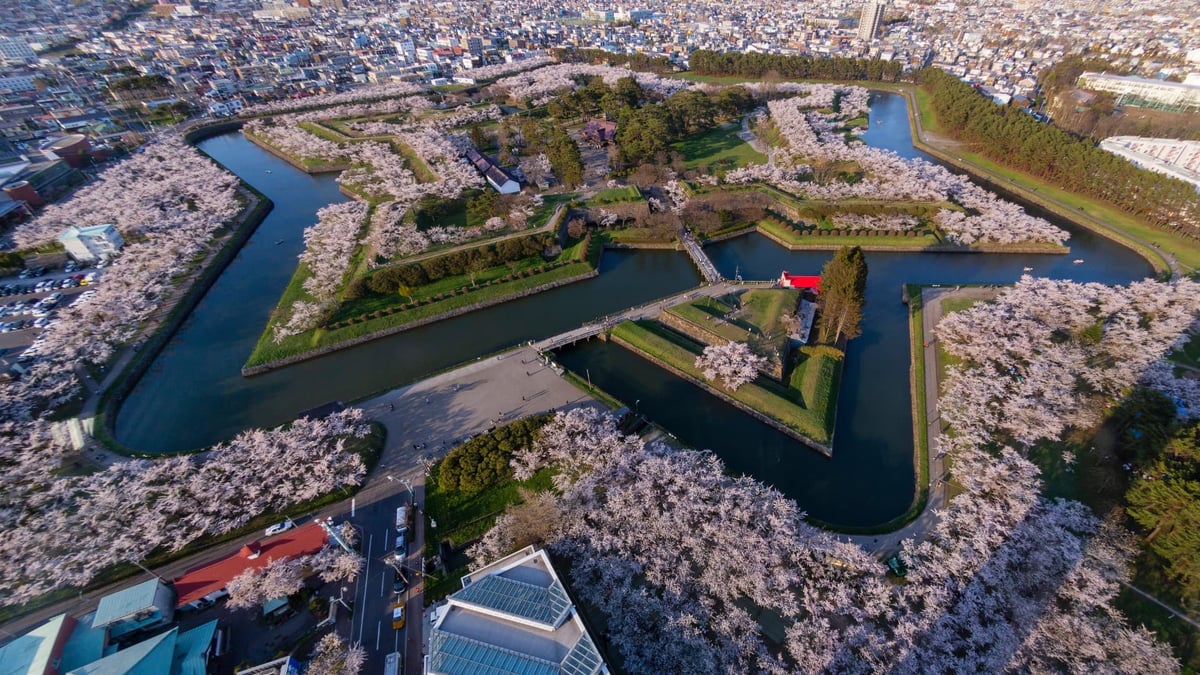
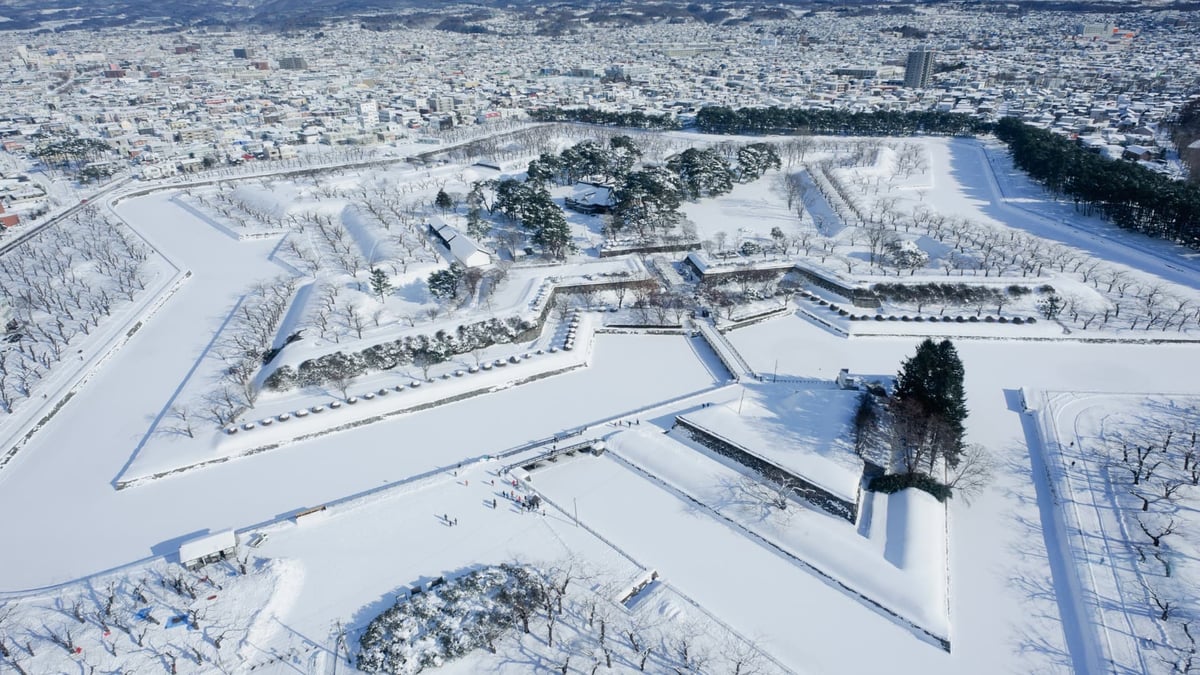




● The Allure of Goryokaku
Goryokaku is renowned for its unique star-shaped design and serves as a symbol of spring in Hakodate. Every spring, Goryokaku Park is transformed into a breathtaking landscape with approximately 1,500 cherry trees in full bloom, attracting visitors with its stunning beauty. From Goryokaku Tower, visitors can admire not only the distinctive star-shaped fortress but also panoramic views of Hakodate City and the Tsugaru Strait.
Beyond its scenic beauty, Goryokaku is a historically significant site, having played a crucial role during the Boshin War. The on-site exhibits and informational displays allow visitors to reflect on Japan’s modernization and historical events.
The surrounding area features cultural institutions such as the Hakodate Magistrate’s Office and the Hokkaido Hakodate Museum of Art, providing deeper insights into regional history and culture. Additionally, a visit to Goryokaku is not complete without enjoying Hakodate’s famous fresh seafood, making it a destination that blends history, nature, and local culinary delights into a memorable experience.
● The History of Goryokaku

Goryokaku was constructed in the late Edo period to defend against foreign invasions, but it ultimately became a key battleground during Japan’s internal conflict, the Boshin War.
In 1868 (Meiji 1), Enomoto Takeaki, leading the former Tokugawa shogunate forces, landed in Ezo (modern-day Hokkaido) with approximately 3,000 soldiers and seized control of Goryokaku. This was part of an effort to establish an independent government separate from the newly formed Meiji administration.
However, facing the overwhelming military pressure from the Meiji government forces, the Tokugawa loyalists were gradually cornered. Hijikata Toshizo, one of the most famous figures of the shogunate, and many of his comrades lost their lives in the battle at Goryokaku. This confrontation marked the final battle of the Boshin War, making Goryokaku the last stand of the Tokugawa shogunate.
● Access to Goryokaku
- Location: Goryokaku, Hakodate, Hokkaido
- How to Get There:JFrom JR Hakodate Station, take the Yunokawa-bound tram and get off at Goryokaku-Koen-Mae Station. The fortress is approximately a 15-minute walk from the tram stop.
- Official Website:五稜郭タワー公式ウェブサイト
- Google Maps:https://maps.app.goo.gl/jFGvMH6QjPCbpiXPA
>> More details on Goryokaku here
■ Related Articles
